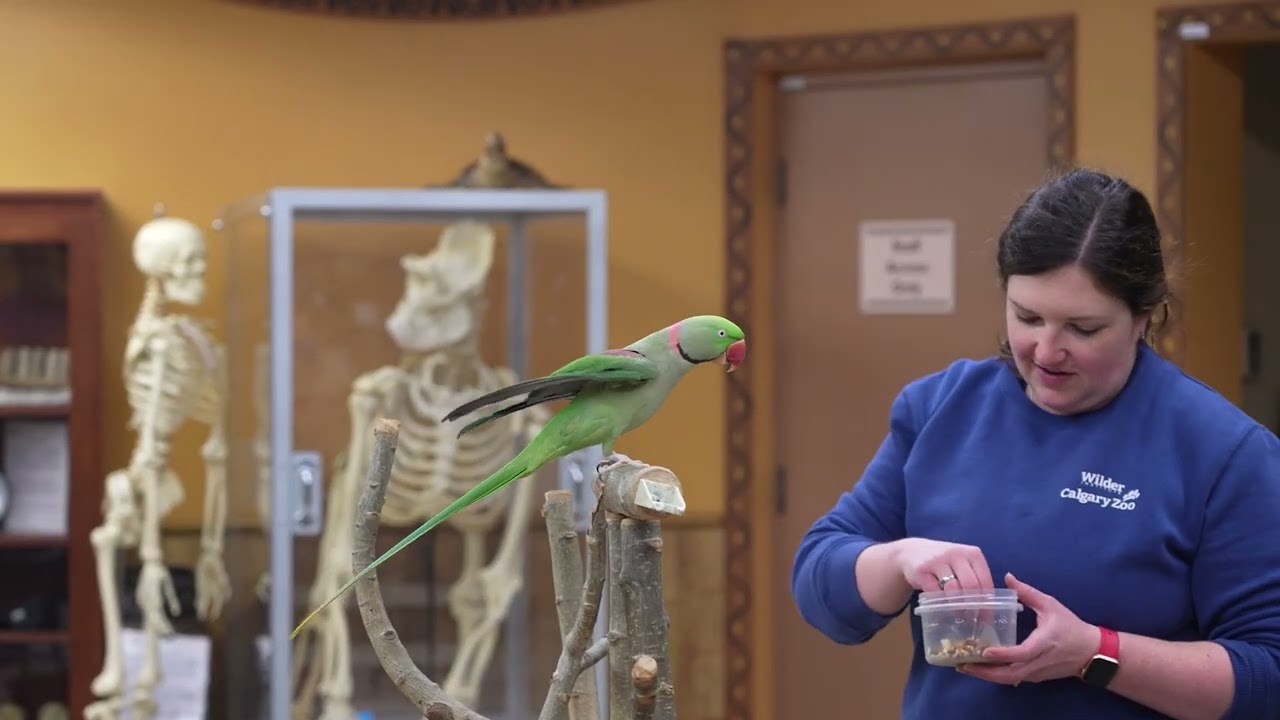– Overview of the Alexandrine Parakeet, focusing on physiology and natural behaviors.
– The life and features of ‘Newman’, a specific Alexandrine Parakeet.
– Conservation status and efforts for the Alexandrine Parakeet species.
– Alexandrine Parakeet’s role in ecosystem and human environments.
– Strategies for care and management in zoo settings.
The Alexandrine Parakeet constitutes one of the larger species within the parrot family, known scientifically as Psittacula eupatria. Characteristic by their vibrant green plumage, red beaks, and distinctive bluish-grey sheen on their cheeks, these birds have captivated people’s attention far beyond their native habitats in the forests and woodlands of parts of South Asia and Southeast Asia.
‘Newman’ represents one such Alexandrine Parakeet residing in a zoological garden, where his activities and interactions provide insight into the species’ behaviors and social dynamics. Observations of Newman and his cohort can illuminate the nuances of Alexandrine Parakeet’s physiology, including their strong, curved beaks designed for a varied diet consisting of fruits, nuts, seeds, and blossoms. Their relatively long tails contribute to agile flight and an imposing figure among similarly sized birds.
The Alexandrine Parakeet’s conservation status is classified as Near Threatened by the International Union for Conservation of Nature (IUCN). Their population faces threats from habitat loss due to deforestation and the pet trade. Newman’s story offers poignant insight into the importance of preservation efforts for this species. Through his presence in a managed care setting, Newman assists in educational and conservation initiatives to raise awareness of his wild counterparts’ challenges.
Within ecosystems, Alexandrine Parakeets play a pivotal role. Their feeding habits aid in the dispersal of seeds, thus supporting forest regeneration and biodiversity. Moreover, in human-dominated landscapes, they often are found in agricultural areas, sometimes becoming perceived pests. Consequently, understanding their natural behaviors, as observed in individuals like Newman, is critical for developing cohabitation strategies that benefit both human and parrot populations.
In zoo settings, the care and management of Alexandrine Parakeets like Newman demand a well-researched approach. Their dietary needs necessitate diverse nutritional sources to mimic natural foraging behaviors. Moreover, to cater to their social inclinations, enrichment activities and social grouping are essential for their psychological well-being. Implementing aviaries that provide ample space for flight and exploration simulates a more naturalistic environment, fostering healthier, more active parakeets.
The narrative of the Alexandrine Parakeet, as exemplified by Newman’s life, sheds light on the interconnectedness of species, ecology, and human impact. By delving into Newman’s daily life, care, and broader conservation context, the discourse aims to enhance appreciation for these birds, encouraging actions conducive to their preservation. With each insight gained from observing Newman, the broader narrative of Alexandrine Parakeet conservation becomes enriched, advocating for strategies that safeguard their future while respecting their role in our shared environment. Through education and targeted conservation efforts, the aim is to shift the trajectory for the Alexandrine Parakeet from near-threatened to secure, ensuring that future generations may continue to experience the wonder and beauty these birds offer.
*****
Source Description
Exciting news from the Rainforest Aviary! 🌿🦜 Alexandrine parakeet, ‘Newman’, has recently joined his fellow feathered friends in the African Rainforest building’s tropical oasis.
Since his arrival in 2014, Newman has resided behind-the-scenes. As an ambassador for his species, he’s helped us to educate generations of campers and school program participants about the conservation challenges facing parrots and the dangers of the illegal wildlife trade.
Our dedicated Animal Care, Health & Welfare team has been working with Newman for the past few months to ensure a seamless transition into his new home. To help him acclimate and strengthen his wings for aviary life, Newman has been honing his flying skills in the Rainforest Classroom. As you can see, he is turning into a flying ace! Right now, Newman is still being introduced to the habitat and the other birds, so he makes regular flying visits to the Rainforest Aviary and will eventually become a permanent resident of the habitat. Keep your eyes peeled for his brilliant plumage among the trees during your next visit!


